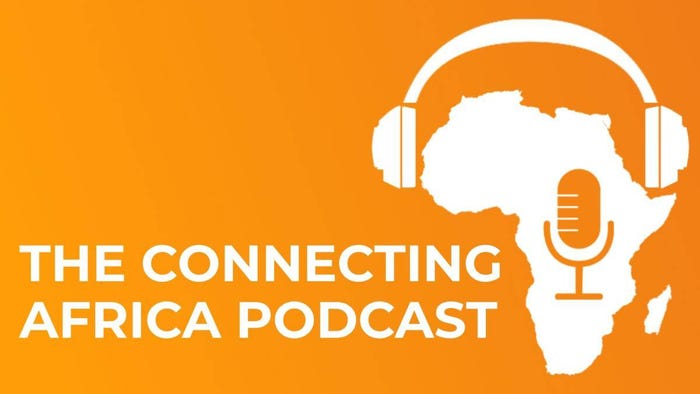The impact of currency weaknesses on the African ICT marketThe impact of currency weaknesses on the African ICT market
During 2023, nearly half of all African countries experienced either currency weakness or volatility which has impacted the local telecoms and ICT market. Analyst Francis Hook gives his views on this trend and how to mitigate risks going forward.

During 2023, nearly half of all African countries experienced either currency weakness or volatility which has impacted the local telecoms and ICT market.
The most prominent devaluation came from Nigeria with the naira losing about 55% of its value during the year. Several other currencies also fared badly: the Angolan kwanza lost 39% in value, the Malawian kwacha lost 39%, the Zambian kwacha fell 29%, the Congolese franc dropped 24% and the Kenyan shilling lost 20%.
The inescapable reality for most African countries is that currency vulnerability partly comes from trade asymmetry in which imports are more than exports, and therefore demand for dollars is always higher.
Outside of this imbalance, global factors including the price of oil – which locally affects manufacturing, transport and energy costs – as well as low prices for agricultural and mineral export commodities have affected forex earnings for many nations.
In 2024, there are already signs that currency volatility may persist – with Nigeria standing out after the government recently took measures to devalue the naira which resulted in havoc for the ICT market, including affecting earnings of telcos like MTN.
In the ICT space, for both the supply and demand sides, currency volatility means higher costs for African countries which import most of their ICT goods and services – including consumer devices, enterprise infrastructure, software and IT services.
Deferred end-user ICT
In cases where infrastructure costs increased significantly for major refresh cycles, phasing out of legacy systems, or new ICT projects, some enterprises have opted to put these projects on the back burner.
In other cases, end-users are looking to optimize existing equipment, make bare minimum investments or resort to off-premises hardware and software solutions.
With some ICT projects, the issue of technical debt may arise, which not only includes deferred spending by enterprises, but opting for cheap, quick fixes that meet certain ICT objectives with the intention of putting in place a more permanent solution later.
However, if currency weaknesses persist over a longer period, it may impact crucial investment milestones.
For sectors like banking, in which certain upgrade cycles cannot really be ignored because of regulatory and compliance issues, additional costs must be borne and somehow recouped via other means.
Infrastructure providers and channel players
Supply-side players like telcos, Internet service providers (ISPs) and data center operators – that are required to constantly upgrade and maintain their networks or infrastructure – have not been spared from currency weakness.
In cases where a first-mover advantage or quality-of-service makes the difference between thriving or faltering, delaying investments in new technologies, expansion, or upgrading is never an option.
Aside from capital costs, many providers also require power backup systems including diesel generators, which become additional operational costs when local currencies are facing headwinds against the US dollar.
Channel players are also affected in different ways. This can be the cost of inventory for equipment, but also for instances where they are required to provide back-up vendor warranties – for which replacement parts or complete units need to be stocked – and more so for "next business day" type warranties which are increasingly common in enterprise settings.
Channel players who fulfill large projects and tenders may sometimes find themselves on the back foot if they quote in local currencies. Should currency weakness occur during processing they stand to lose out.
Local manufacturing or assembly
Markets including Ethiopia, Nigeria and Kenya have over the years invested heavily in local assembly or manufacture of devices such as phones and computers, with the endgame being to produce cheaper devices and reduce reliance on tech imports.

Workers at the East Africa Device Assembly Kenya facility in Athi River, Machakos County, Kenya. (Source: The Presidency of the Republic of Kenya)
However, players still need to import various components for the processes and are not immune to the vagaries of currency fluctuations.
In countries where currencies have lost a significant amount of value, any gains from manufacturing locally are eroded by the currency weakness.
Mitigation measures
Africa is likely decades away from being self-sufficient in terms of meeting its ICT needs. However, to arrive at that point, while at the same time continuing to participate in the global digital economy, various measures can be considered.
Some are short term workarounds while others will help pave the road towards future self-sufficiency.
Among the immediately accessible opportunities would be greater investment in local infrastructure and attracting foreign direct investment by international players to better serve local markets and allow for skills transfer. Some of this is already happening for reasons unrelated to currency volatility – like data centers meeting regulations for local data residency.
Local and regional Internet exchange points (IXPs) are also helping to keep local data traffic on the continent, greatly reducing the need for more costly international capacity.
Other measures, either under consideration or already being adopted, include the use of locally delivered cloud services: infrastructure-as-a-service (IaaS), software-as-a-service (SaaS) and platform-as-a-service (PaaS).
In this area, local telcos, ISPs and other providers are playing a bigger role, with some working in collaboration with international hardware, software and services vendors. For local cloud services, investment in robust and redundant local connectivity has played an integral role in adoption.
New technologies have also helped reduce the need for costly infrastructure, including those that help optimize existing infrastructure – e.g. software defined networking – and the increased adoption of open-source software is a no brainer for many enterprises and application developers.
It goes without saying that developments in the ICT space have hinged on enabling policies and regulations and for future development, similar recourse will help further national agendas in ICT capacity development.
Follow Connecting Africa on our new X account @connect__africa to get the latest telecoms and tech news across Africa.
Infrastructure, investment, capacity building, industrialization/manufacturing, regional trade and localization are some areas in which new policies and regulations can help nudge the continent towards becoming a more prominent player in the ICT space in the future.
*Top image source: Image by freepik.
— Francis Hook, Africa ICT Analyst, special to Connecting Africa


.jpg?width=700&auto=webp&quality=80&disable=upscale)
_(1).jpg?width=700&auto=webp&quality=80&disable=upscale)
.jpg?width=700&auto=webp&quality=80&disable=upscale)
_(1).jpg?width=700&auto=webp&quality=80&disable=upscale)
.jpg?width=700&auto=webp&quality=80&disable=upscale)
.jpg?width=700&auto=webp&quality=80&disable=upscale)
.jpg?width=700&auto=webp&quality=80&disable=upscale)
.jpg?width=700&auto=webp&quality=80&disable=upscale)


.jpg?width=700&auto=webp&quality=80&disable=upscale)
